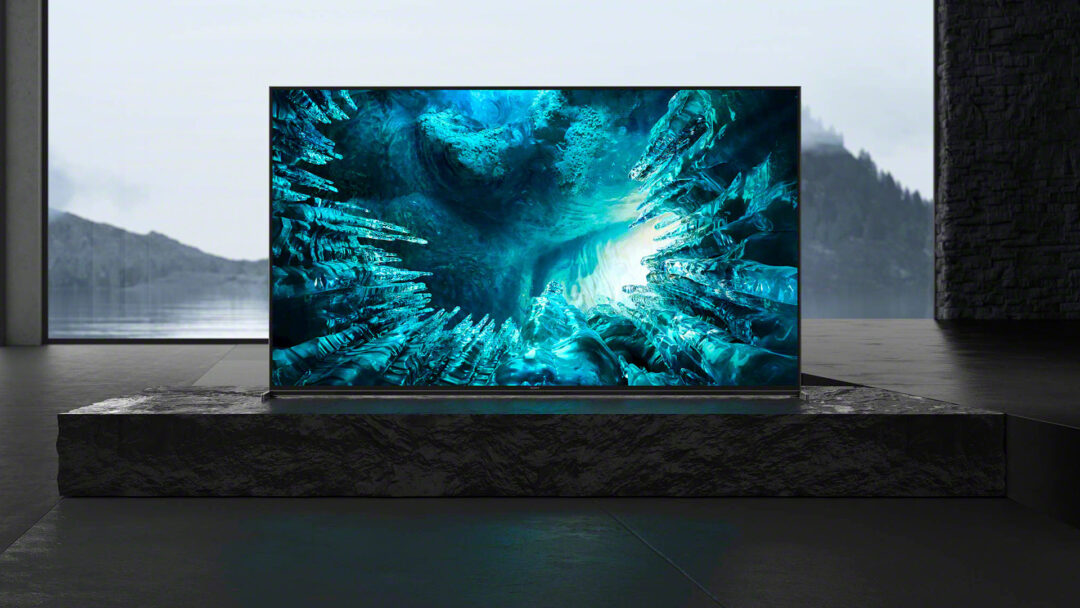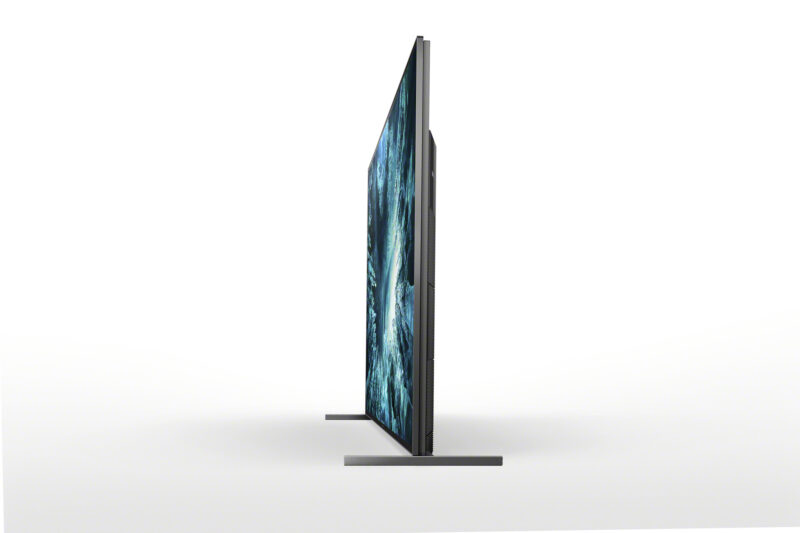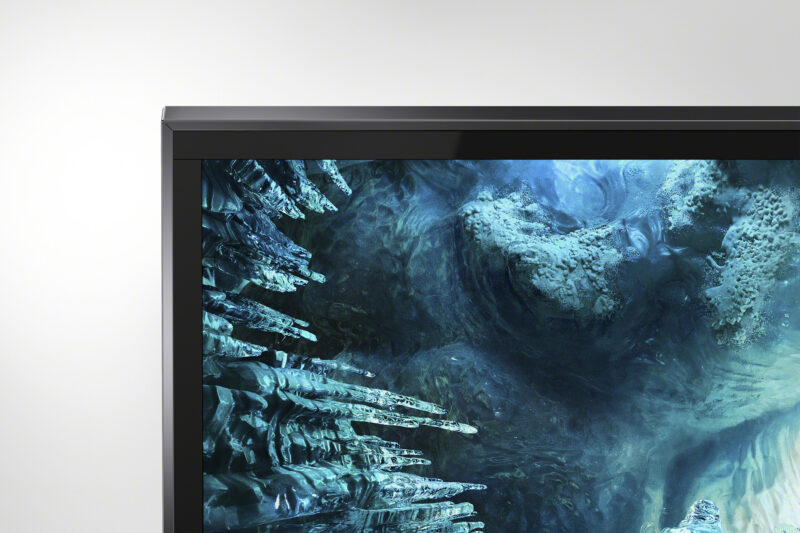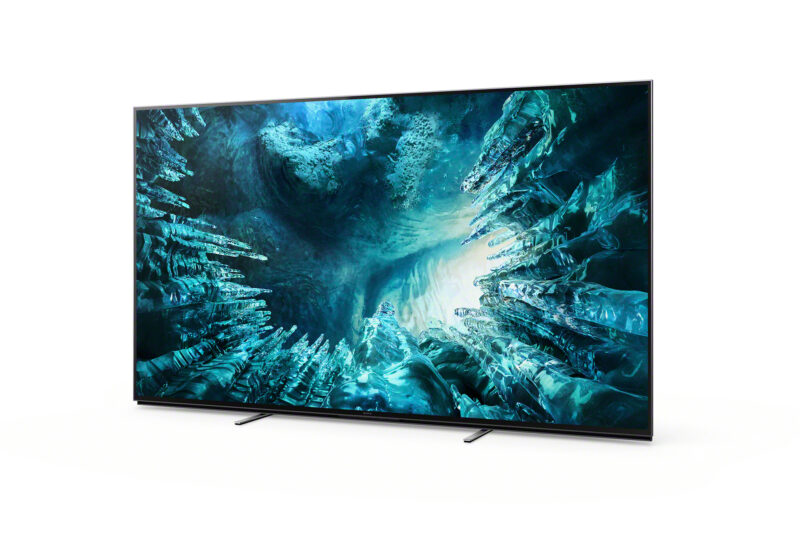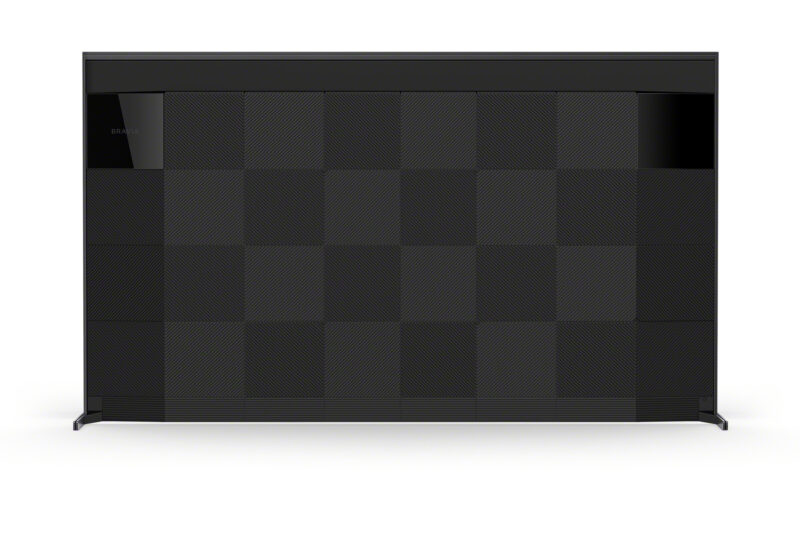Sony ZH8 is the Japanese manufacturer’s rawest LCD TV for 2020. It is packed with advanced technology, including a state-of-the-art 8K resolution image panel, Sony’s own X1 Ultimate video processor, as well as extra speakers to ensure a sound experience outside the usual. In addition to the 75-inch we test here, there is also an even larger 85-inch to get. But you will not know the price of it!
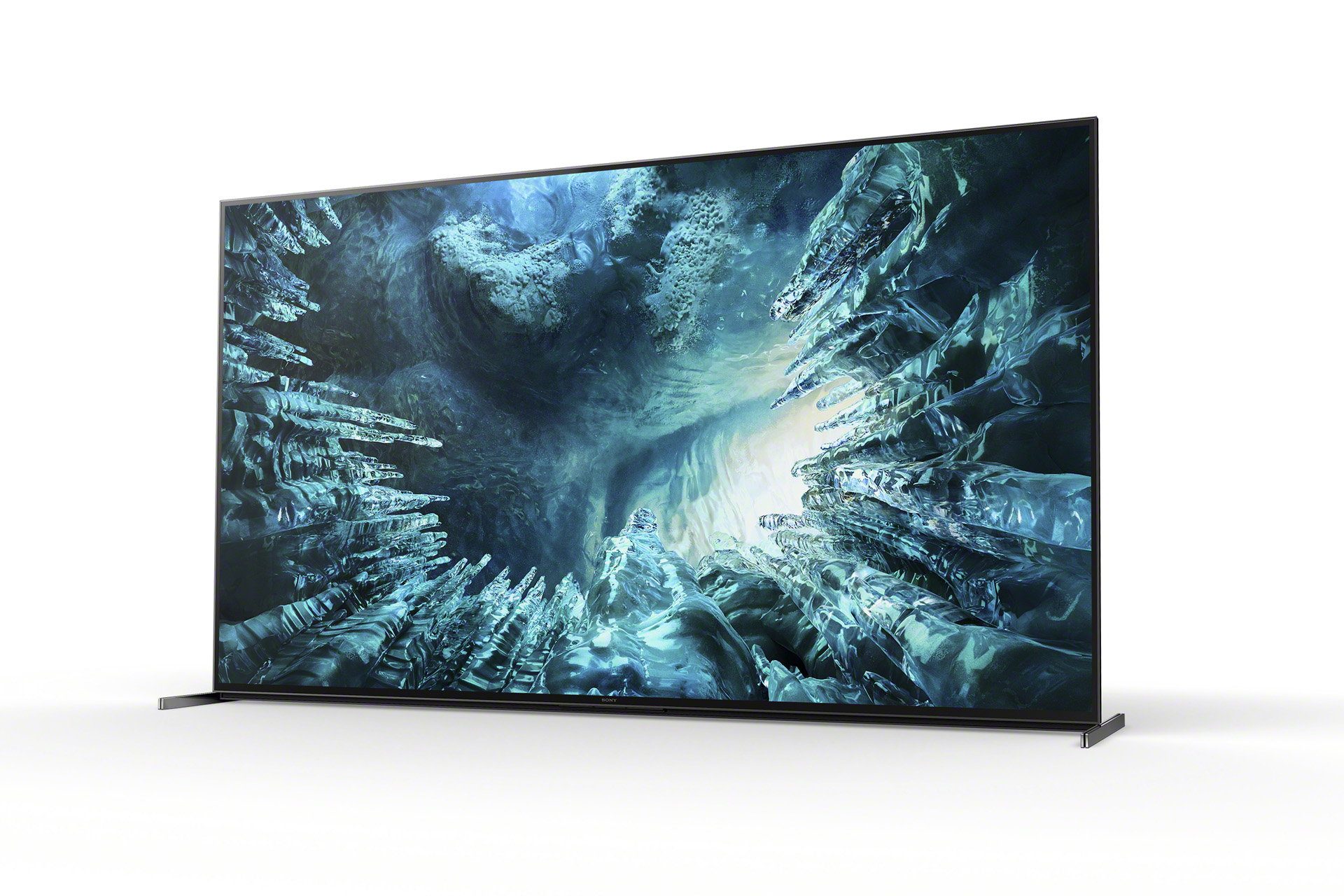
Design
The Sony ZH8 bears the mark of being a TV where the engineers have had their say, long before the designers have come on the scene. We are talking about a relatively thick and angular construction, which is almost reminiscent of rear projection TVs from ancient times! The difference between Samsung and their sleek top model Q950TS, could hardly have been greater. However, there is good reason for the extra thickness: Sony has obviously provided plenty of space (and probably also cooling) for the powerful LED backlight.
The TV is stable on two polished metal feet that can be mounted either wide or narrow depending on how wide the shelf is. Otherwise, it is worth noting that the ZH8 rests only a few millimeters above the table surface. Therefore, a possible soundboard may partially shade the image.
Ease of use and features
Like other Sony models, the ZH8 uses Google’s Android system (version 9.0). Combined with good processing power and memory capacity, this ensures that both menu selections and apps are loaded in no time. The Google platform is also characterized by a wide range of apps and streaming services, including Disney + and Netflix pre-installed – the rest can be easily found in the Google Play Store, including Apple’s TV service which has recently become available on Android.
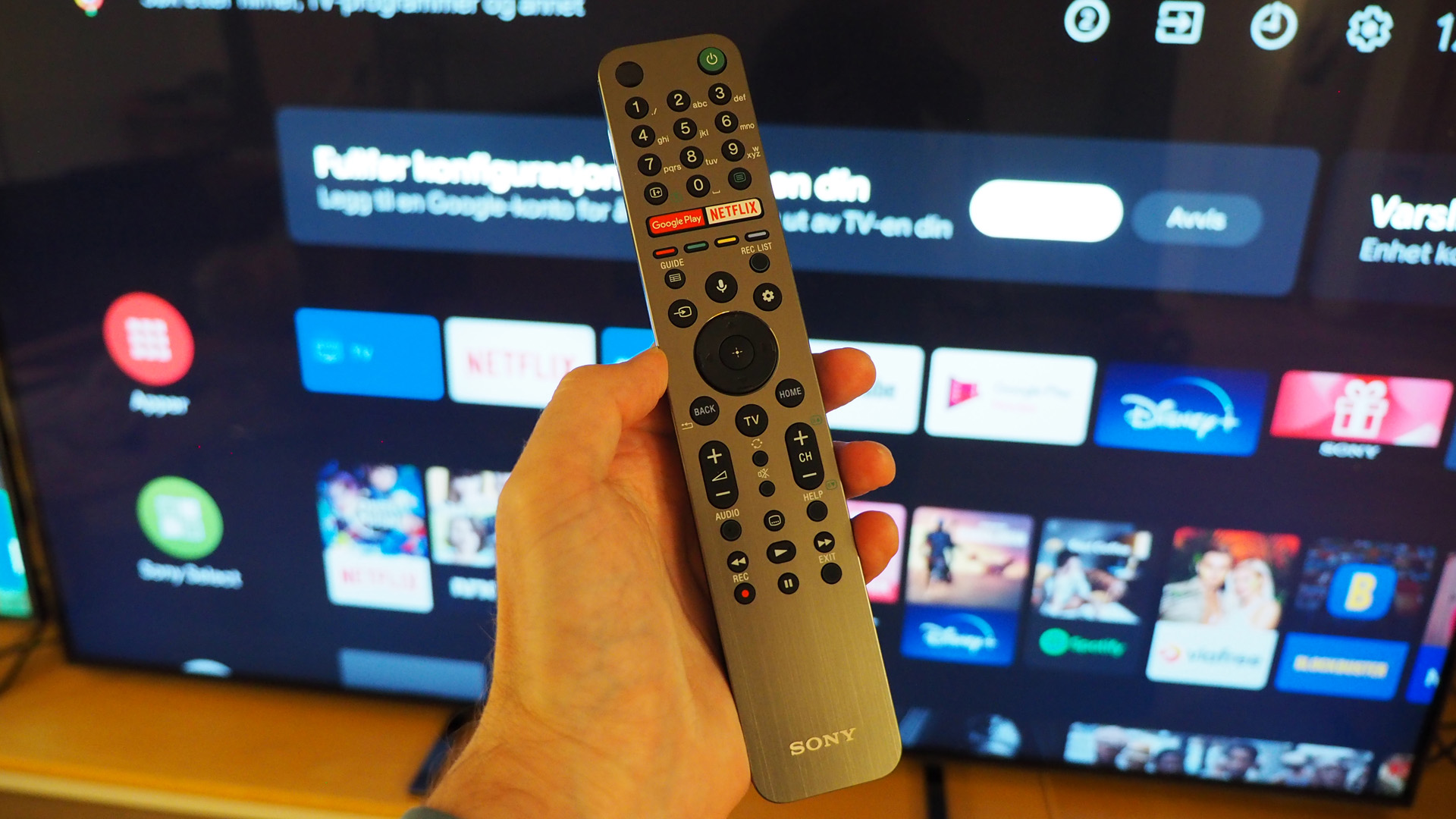
The ZH8 has also got Sony’s most beautiful premium remote control: this version has both Bluetooth transmission AND backlit buttons that are activated when you pick up the control. It has become far more comfortable to use, and does not even need to be pointed directly for the TV to respond.
ZH8 otherwise has support for Google Assistant voice control, and built-in Chromecast that makes it easy to stream or share content via your Android phone. Apple users can enjoy support for Airplay and Homekit, which make it easier to control your TV and share content via iPhone.
Sony ZH8 supports both Dolby Vision HDR as well as regular HDR10 and HLG, but has to do without the HDR10 + format. It also boasts Netflix Calibrated Mode, which offers studio-quality Netflix content.
Supports HDMI 2.1 – but only on one input
The Sony ZH8 is equipped with four HDMI inputs, including a high definition audio return channel (HDMI eARC). In addition, it – as one of the few 2020 models from Sony – boasts a fully compatible HDMI 2.1 input. This is one of the reasons why Sony has chosen to market the ZH8 as a so-called “Ready for PlayStation 5” model. With the ability to display, among other things, 4K video with up to 120 frames per second (alternatively 8K video with 60 frames per second), it is tailored for demanding game titles.
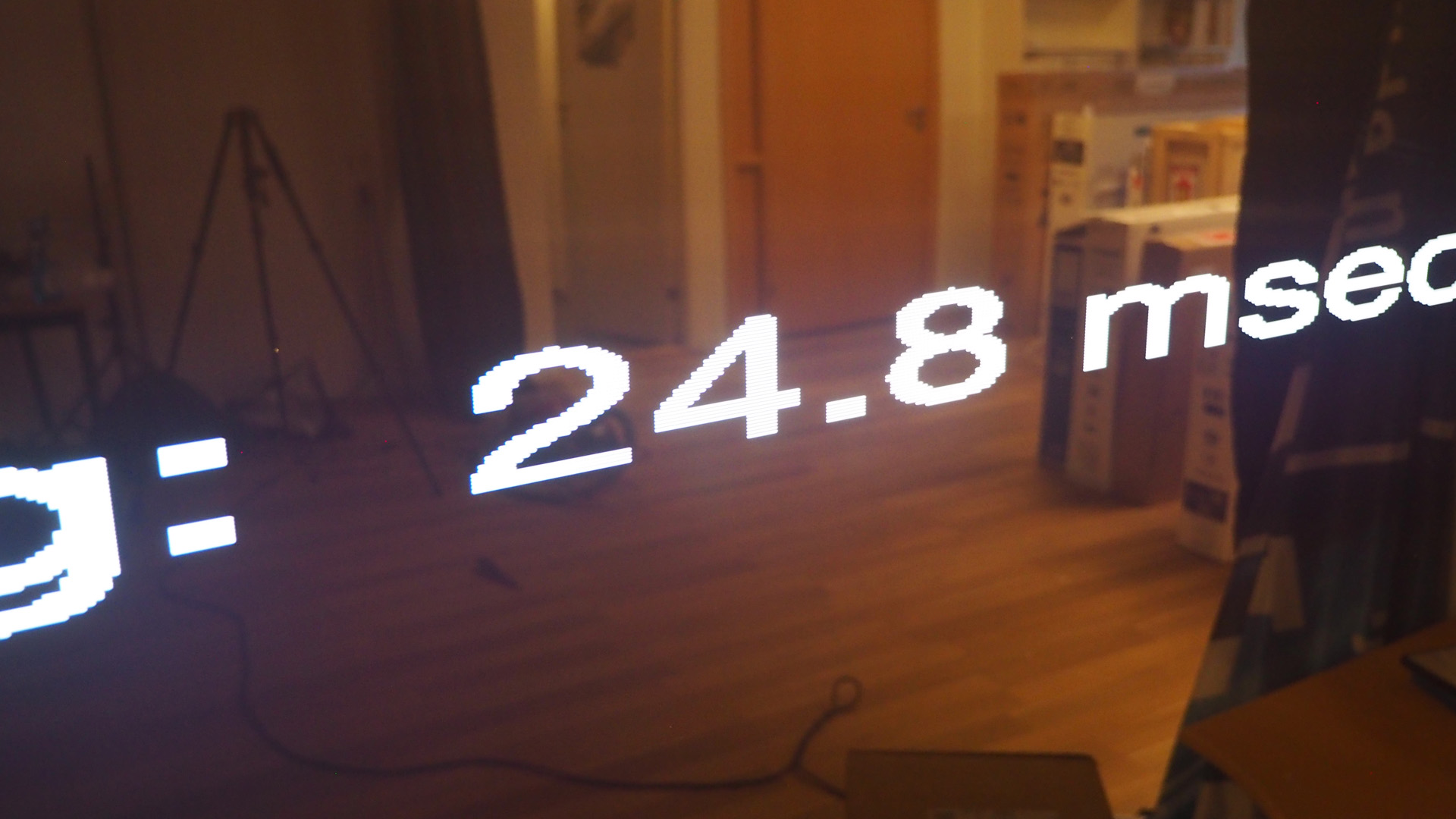
The Sony ZH8 has a usable delay on the inputs, but is far from class-leading: We measured the input to around 25 milliseconds in best game mode. This will probably drop to about half if you use 4K / 120fps image signals, but we did not measure that exactly. Either way, the Sony screen will be fast enough for most people.
Although the Sony ZH8 is equipped with an 8K image panel, it has a few limitations compared to other 8K models we have tested this year, including the duelist from LG. Most prominent is the lack of support for the new video coding AV1, which is needed to display 8K content from YouTube. It also cannot play 8K files via USB. The only option is via HDMI connector number 4.
Another potential miss for gaming fans is that the VRR (Variable Refresh Rate) features excel with their absence. This function helps to reduce so-called “screen tear” during rapid movements.
We has been in contact with Sony, who answer that they are working on an update for VRR and ALLM (Auto Low Latency mode):
We are currently developing this but we are waiting for certification specs to be announced. After this has been announced, then we can launch VRR / ALLM on XH90 and ZH8.
Image quality
Sony already has some experience with 8K TVs: We still have the test of the fire-breathing 2019 model Sony KD-85ZG9 from 2019 fresh in our minds, and it was definitely a picture experience that has burned into the retina. That’s why we were excited to see how much of Sony’s performance has managed to retain in the ZH8. And it did not take long before the superlatives flooded in: The first impression on the notepad is “for a juicy brightness ..!”
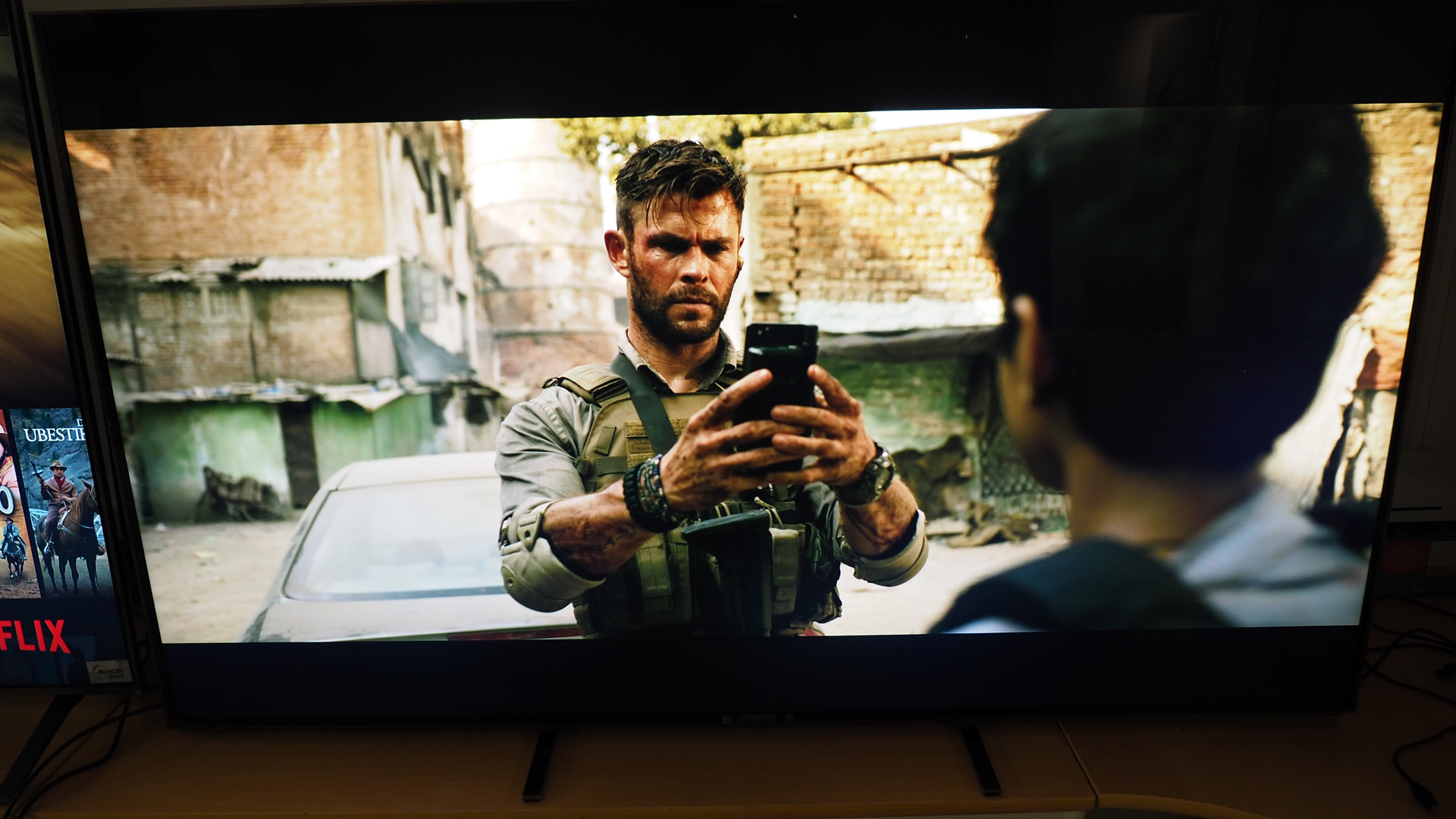
We started with the action movie Extraction (Netflix), which is served in the contrast-rich Dolby Vision HDR format. The scenes where mercenary Tyler Rake (played by Chris Hemsworth) moves through the sunny market in Dhaka, on to darker rooms and dark underground tunnels, look nothing but beyond raw! We have been impressed by these sequences on several occasions, but the Sony screen simply looks explosive in the way it makes bright image areas shine. The way the sunlight shines in the sky and is reflected via shiny surfaces, gives a captivating, almost 3D-like realism.
Compared to the LG Nano99, there is no doubt that the Sony screen has far more image dynamics, contrast and brightness available. Here is also significantly more “gunpowder” than what we experienced when we tested the Samsung Q950TS the other day. Another proof that the HDR experience really comes into its own on a bright screen!
Like the Sony A85, which also uses the X1 Ultimate processor, the ZH8 also excels with very good and natural color reproduction. It is incredibly full-bodied and nuanced, without being oversaturated or unnatural. The Sony screen also has a superb noise reduction, which removes compression noise without fussing over the small details.
The upscaling from lower-resolution video sources is also impeccable: Sony’s image processor analyzes and scales up HD and 4K material to 8K resolution using advanced algorithms, which are retrieved from Sony’s own 8K database. It makes both HD and 4K content look seamless and sharp on the big screen.
The Sony screen also excels with very precise light control. The light distribution is very even across the entire panel. There are no signs of vignetting here as we experienced with, for example, the Samsung Q950TS – the image is only slightly darker in the corners. The local dimming is also very precise: the Sony screen can be dazzling light in a small part of the image, without this blurring into the dark. Here we are talking about a completely different precision than the LG NANO99! ZH8 and also significantly more accurate than what we experienced with the Sony XH9005. No wonder, as the ZH8 has about 320 LED zones available.
The Sony screen brings the engaging realism into the gaming world as well. When we switched to the racing game Forza Horizon 4, we were immediately impressed by the dazzling contrast! The turquoise blue sky, and the sunlight reflected via the polished cars look frighteningly realistic. Sony’s image processing also works great in gaming mode. We look forward to testing the ZH8 more closely with the PlayStation 5, and will update with more impressions then.
Missing real 8K content
As mentioned, the Sony screen does not support 8K via YouTube. It is undoubtedly a handicap compared to the LG NANO99 which gives full access to everything from amateur videos to more professional productions in true 8K resolution. YouTube is actually one of the few sources of 8K content in the foreseeable future, which is why it’s a shame that Sony has missed this opportunity.
Fortunately, the ZH8 has a very efficient upscaling, which upscales 4K to 8K in a good way. In addition, its stark contrast makes the images often look at least as impressive via the Sony screen. If we look closer, however, it is possible to see that the LG screen brings out significantly more fine-grained details that Sony misses.
Sound quality
On the audio side, the ZH8 is equipped with Sony’s Acoustic Multi-Audio. This solution uses additional tweeters mounted strategically in the TV frame to provide a more immersive and clear surround sound experience. It also supports Dolby Atmos sound processing: The Sony screen actually has impressively good sound: Here there is plenty of fullness in the bass, in addition to a large and clear sound image. That said, we expect that many potential customers will probably choose to get for a separate soundboard. An image in this quality class deserves thoroughbred surround sound!
Conclusion
Sony’s best LCD TV is undoubtedly an impressive sight: the Z8H is not only razor sharp, but also has an extremely dazzling brightness (well over 2000 nits) and colossal contrast! The Sony screen manages to reproduce large, realistic contrast differences where other less bright screens look directly flat. Realism is palpable! But if it tastes good, then it costs: With a price of 8990 (guide), the Sony ZH8 is also among the most expensive 8K monitors on the market. Therefore, it is also a shard in the joy is that Sony does not support the new AV1 codec for YouTube. This prevents us from watching 8K content from YouTube in all its glory, which definitely belongs on an 8K TV like this. Quite apart from that, the Sony ZH8 is actually one of the rawest LCD screens we have ever tested.

We think
The Sony KD-75ZH8 is a very bright and high-contrast LCD screen. It provides a hefty HDR video experience, which is some of the roughest we've seen! The Sony screen lacks support for 8K video from YouTube, which limits access to razor-sharp content. It also does not support variable refresh rate (VRR) for gaming.
8999 €
Specifications
- Size / type: 75 ”8K LCD
- Resolution: 7680×4320 (8K Ultra HD)
- Operating system: Android 9.0
- Inputs: 4 HDMI (2.0b + 1 pc 2.1), 3 USB
- Outputs: Optical digital audio output
- HDR: HDR10, HLG, Dolby Vision
- Other: Acoustic Multi-Audio speakers
- Other screen sizes: 65 “, 75”, 85 “
- Web: sony.com
